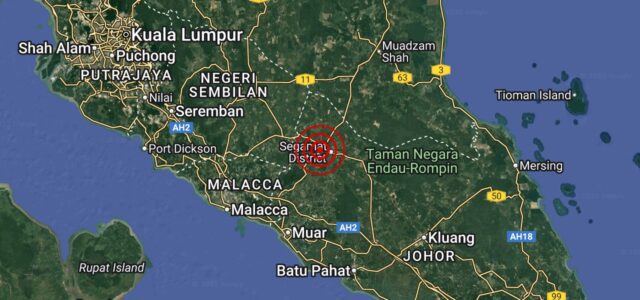Another earthquake strikes Johor; Singapore BCA says no reported impact on local buildings
another-earthquake-strikes-johor-singapore-bca-says-no-reported-impact-on-local-buildings
#earthquake #strikes #Johor #Singapore #BCA #reported #impact #local #buildings,
MALAYSIA: Some residents in Segamat, Johor, reported feeling further tremors on Wednesday morning (Aug 27), three days after a 4.1 magnitude earthquake struck the district.
The Malaysian Meteorological Department (MetMalaysia) confirmed that a 3.2 magnitude earthquake was recorded at 8:59 a.m. on Wednesday, with its epicentre located 18 kilometres south of Segamat at a depth of 10 kilometres. The tremors were felt across much of Johor and southern Pahang.
Residents described the sensation as being similar in strength to the 2.8 magnitude aftershock that followed Sunday’s earthquake.
Last Sunday (Aug 24), Johor experienced two earthquakes within hours. The first, a 4.1 magnitude quake, was centred near Jalan Muar in Selangor at a depth of 10 kilometres. The second, with a magnitude of 2.8, struck about 28 kilometres northwest of Kluang, also at a depth of 10 kilometres.
MetMalaysia said in a Facebook update posted at 11 a.m. on Wednesday that monitoring efforts will continue closely in light of the tremors.
Meanwhile, in Singapore, the Building and Construction Authority (BCA) reassured the public that the earthquakes in Segamat on Sunday had no reported impact on local buildings.
In a Facebook post on Tuesday (Aug 26), the BCA stated: “All buildings in Singapore are designed based on prevailing internationally recognised codes adapted for our local context.
“Our buildings are designed to be sufficiently robust and capable of withstanding lateral forces, including those due to tremors from distant earthquakes.”
The authority added that real-time data has been continuously monitored, and none of the tremor sensors installed on buildings across Singapore were triggered by the 4.1 magnitude earthquake in Segamat, which is about 180 kilometres away.
“BCA will continue to closely track regional seismic developments, review and update its building safety framework to keep pace with evolving global standards and environmental conditions such as climate variations and resilience against regional earthquakes,” it said.
